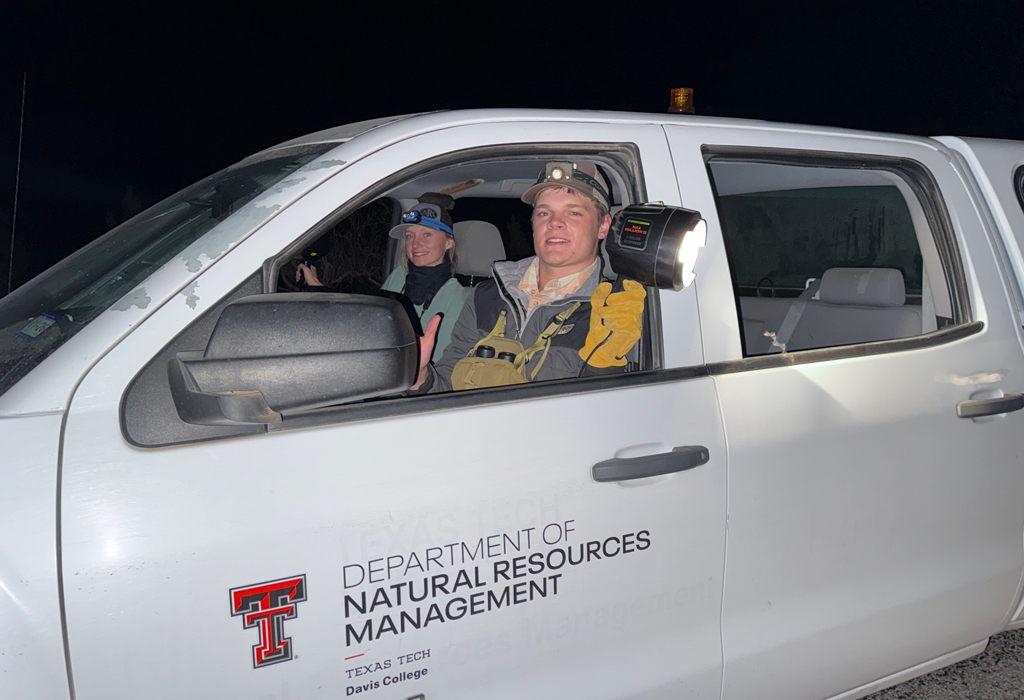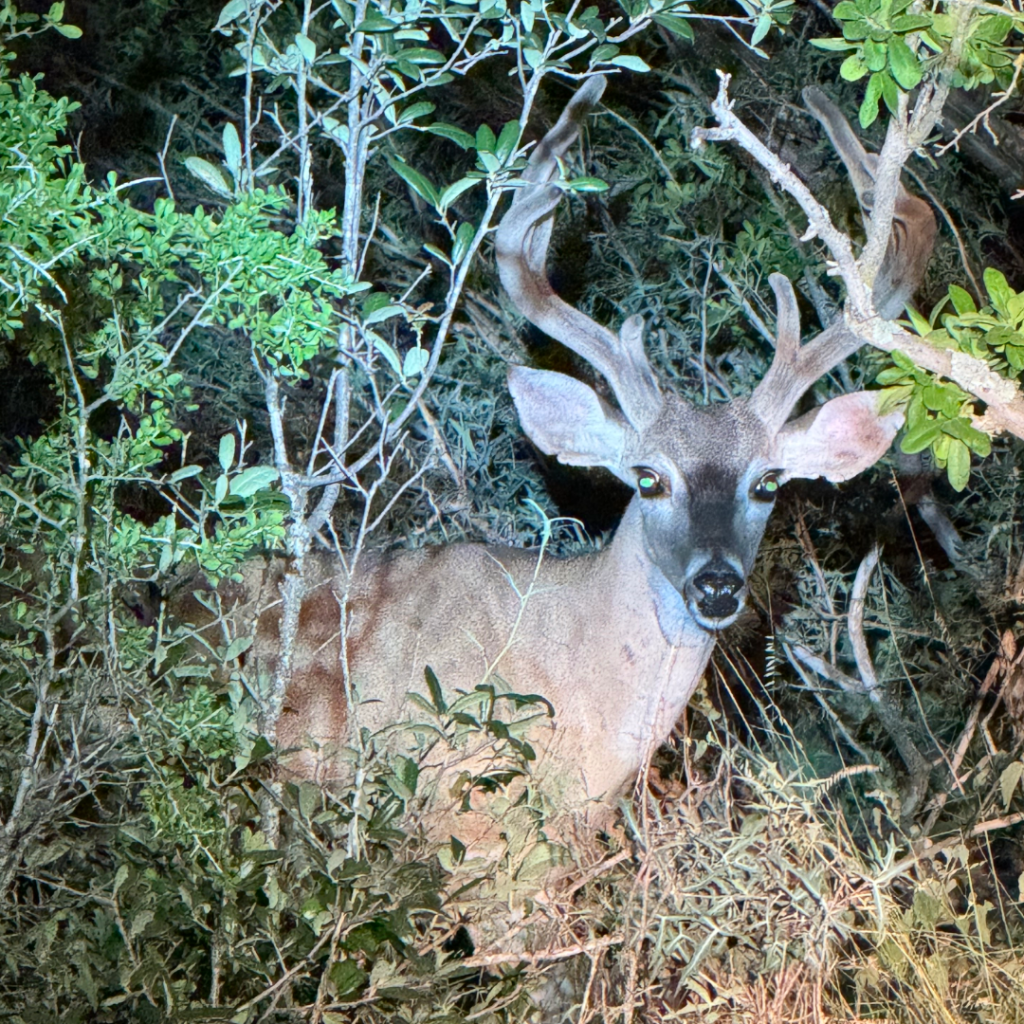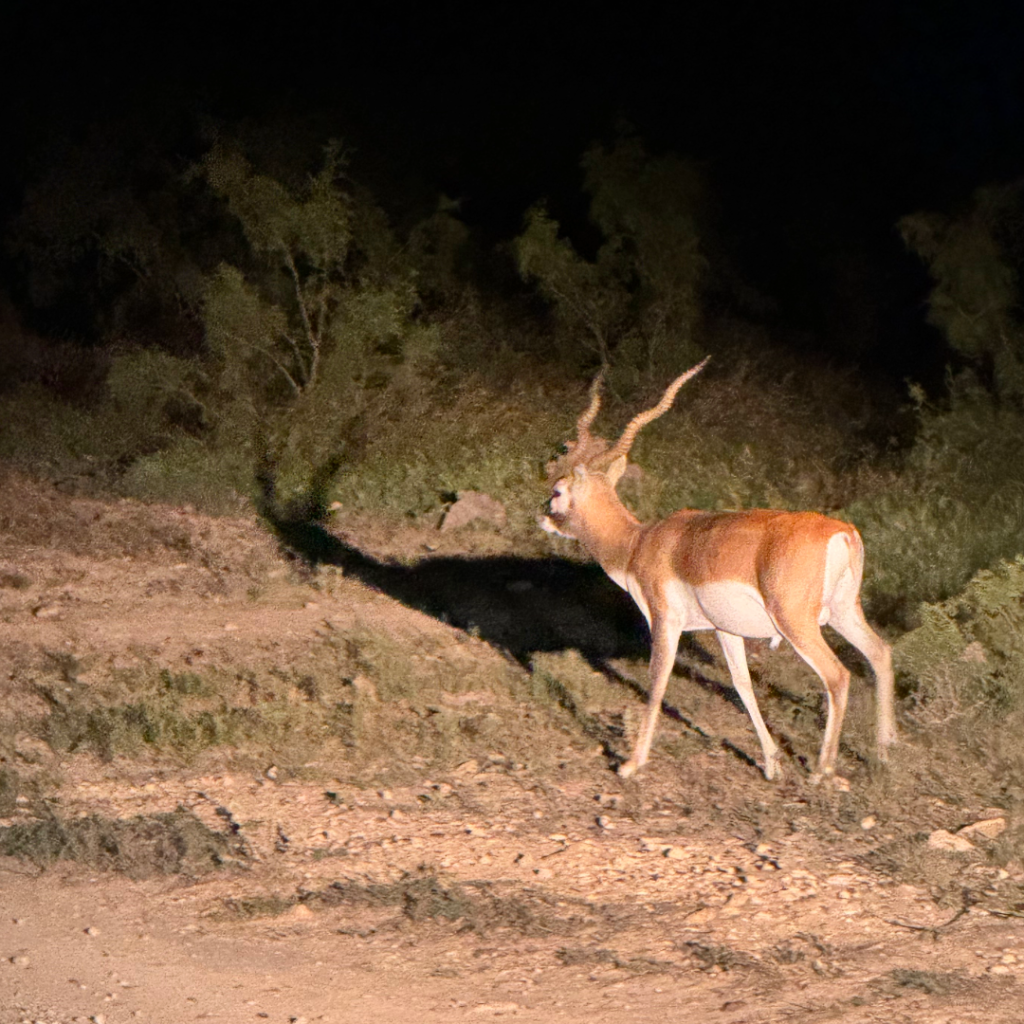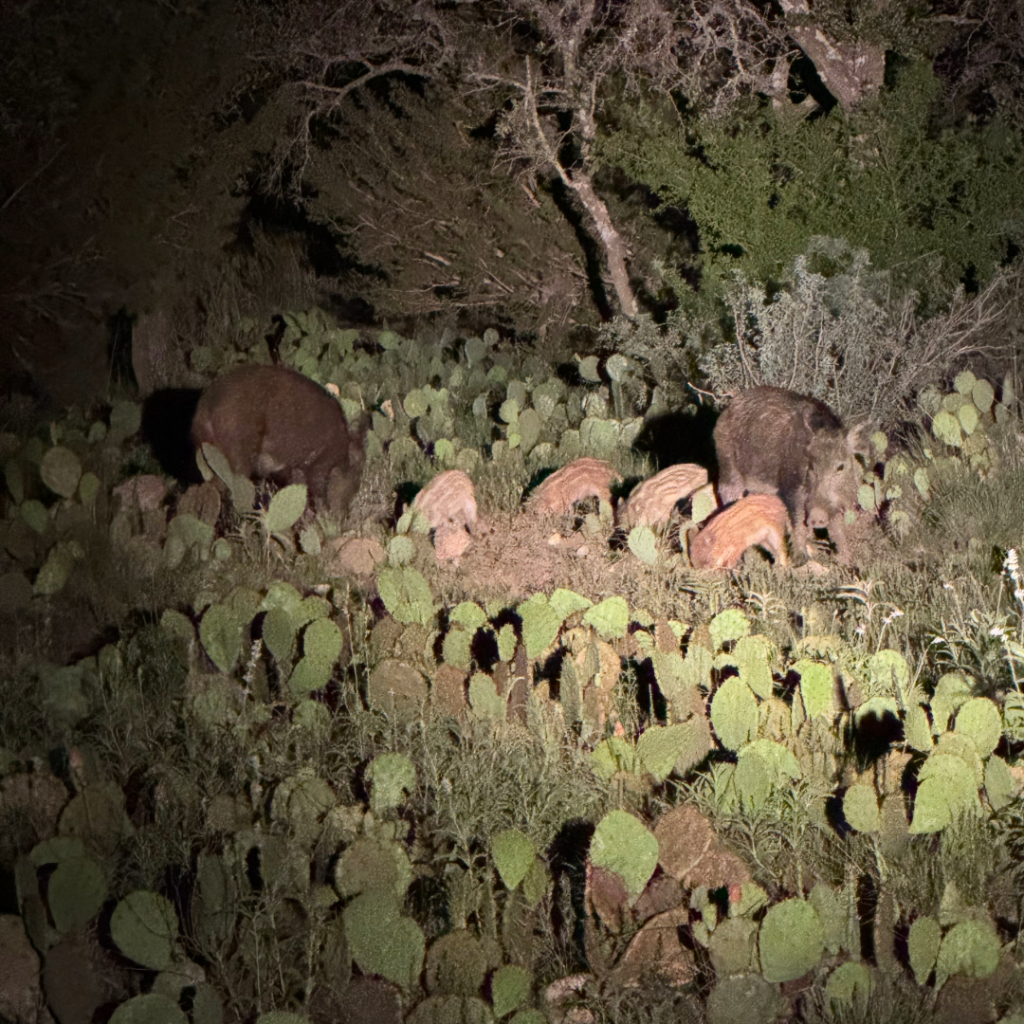
Carsten Groos, a graduate student in the Department of Natural Resources Management at Texas Tech University, is researching native and exotic ungulates (hooved animals) in the Texas Hill Country. He uses spotlight surveys and remote land cover analysis to estimate population densities and habitat associations of the free-ranging (feral) species found throughout the western Edwards Plateau region of Texas.
What makes Shield Ranch Camp Wood particularly well-suited for your research?
Shield Ranch Camp Wood is well-suited for my research because of its ecological diversity. The property’s conservation-oriented management, water regime, rugged topography, and geographic location provide ideal habitat for many species of native and non-native ungulates. Additionally, the ranch is low-fenced, allowing for uninterrupted animal movement.
What does a typical field day look like for your study?
A typical field day involves a lot of driving, data recording, and coffee. We conduct spotlight surveys at night, so our days start around noon and end around 4 or 5 AM. During daylight hours, I check the weather forecast and survey schedule, prepare equipment, upload the previous night’s data, and handle other minor tasks.
After dinner, our two survey teams (each comprised of 2 observers and 1 data recorder) depart for the spotlight survey routes. We drive slowly with spotlights on each side of the vehicle, recording data on every native and exotic big game ungulate we see. Survey routes are 5 to 12 miles and can take 1 to 4.5 hours. Since August 2025, we have recorded nearly 3,400 individual ungulates from 43 surveys on 12 routes in 7 counties.
How do you envision your findings informing conservation efforts or land‐management practices?
Although the Edwards Plateau is believed to have the greatest densities of native white-tailed deer and exotic big game of any region in the world, limited data exist. My research aims to develop regionally specific density estimates, updated habitat associations, intensity of sympatry among these species, and estimates of future abundance trends.
I envision our findings providing a useful set of baseline population estimates for the Texas Parks & Wildlife Department and landowners in the region. Findings can help inform land management goals, specifically brush management goals related to wildlife.
What have you found most personally rewarding about your research?
My favorite part has been working with the landowners, managers, and biologists across our study area who care deeply about the land and wildlife. My research feels more rewarding knowing that the findings are interesting and valuable to those who live and work with the lands and species we study.



Spotlight survey images taken at Shield Ranch Camp Wood; photos courtesy of Carsten Groos.
